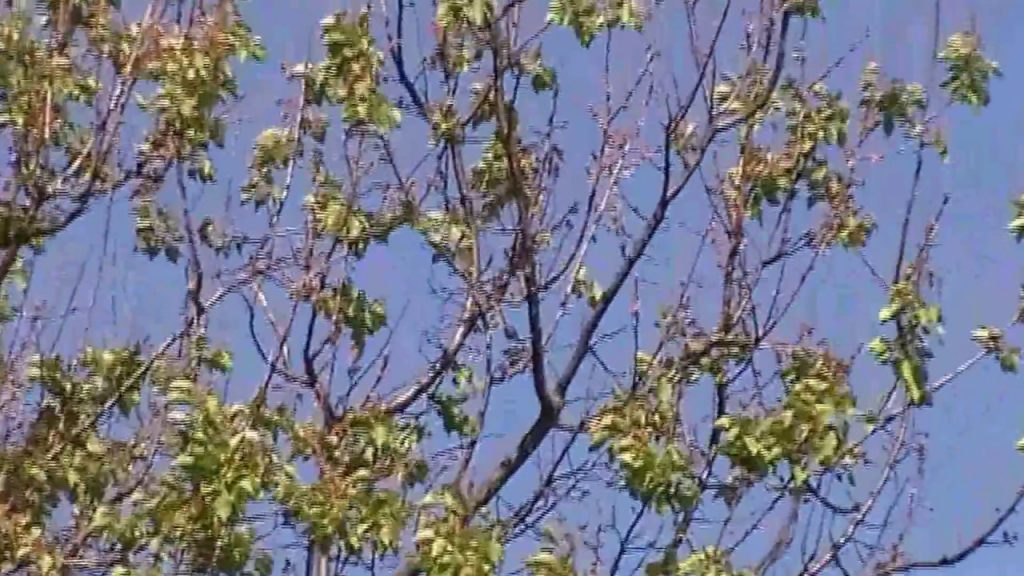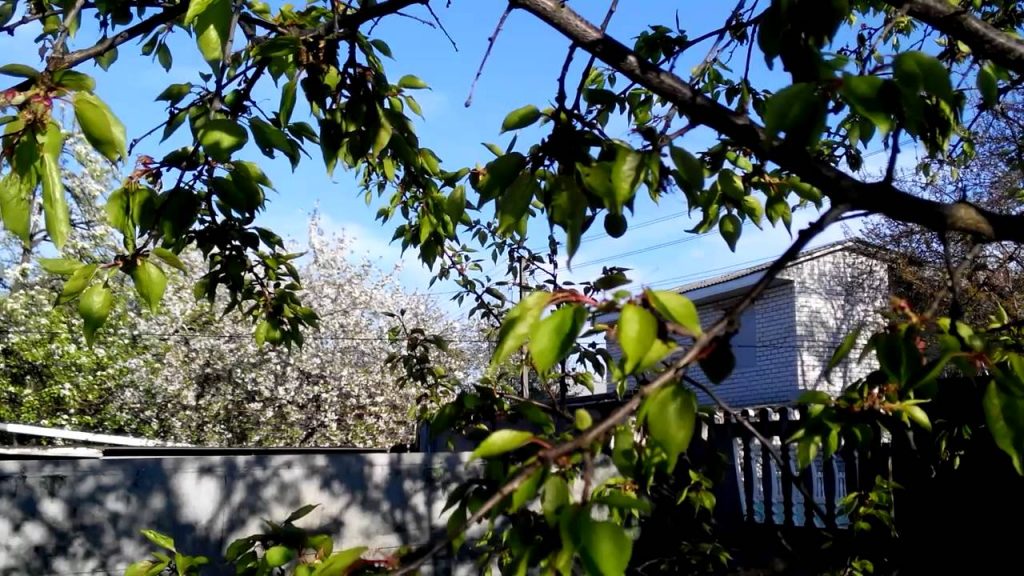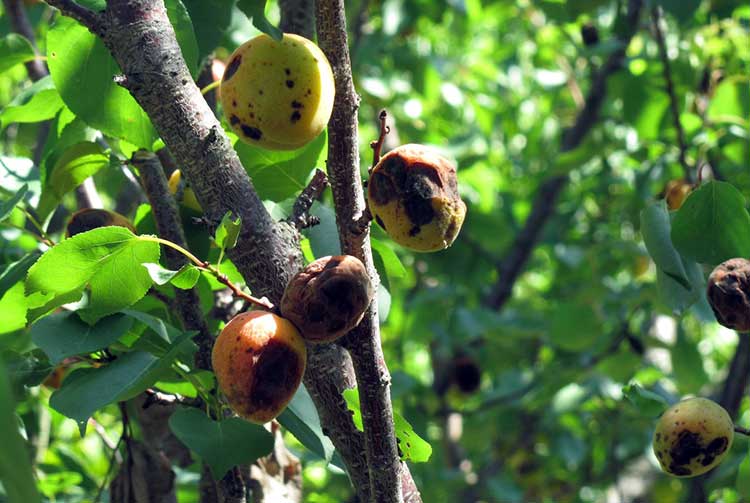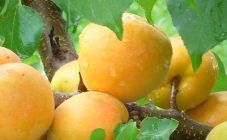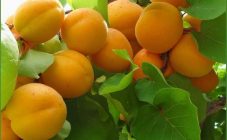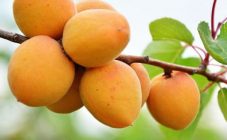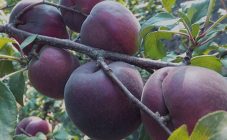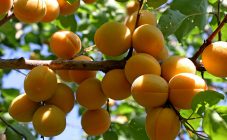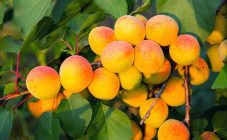Content:
Fruiting of an apricot begins from 3-5 years and lasts up to 40 from the moment of planting the seedling. Most varieties are cold tolerant and drought tolerant. The tree begins to bear fruit in early summer. In a warm climate, it grows up to 100 years. But harvests do not always please gardeners. The most common is the unreasonable falling of flowers and unripe fruits. Why is the apricot still crumbling green?
General rules for the care of apricots
To understand why apricot fruits fall, you need to know the rules for growing it and preventing various diseases. Successful protection of seedlings depends primarily on the timely detection of dangerous diseases and pests. Many of them are barely noticeable, and gardeners sometimes find not the culprits themselves, but the damage caused by them. Most often apricots are affected:
- scab - appears as brown spots on leaves, shoots and unripe fruits;
- gray rot (moniliosis) - unripe berries rot, young shoots dry out;
- perforated spot (clasterosporium) - affects shoots, fruits with brown spots and wart-like swellings;
- curliness of leaves - fruits and leaves suffer from growths similar to a burn;
- cytosporosis - manifested by brown streaks, ulcers on the trunks, wilting of leaves and drying of the bark;
- powdery mildew - affects leaves, shoots, fruits with a white-gray bloom;
- bacterial burn - first of all, the flowers wither, then the branches dry and a whitish liquid begins to flow from the cracked bark;
- apoplexy - branches, leaves and bark of a tree dry out;
- parasites - deprive the tree of nutrients.
In addition to "home chemistry" in the form of infusions and decoctions, you can use ready-made means to prevent many diseases. However, do not forget about such simple techniques as digging near-trunk circles, collecting volunteers, overlaying hunting belts. In addition to protective measures, you should take care of attracting insectivorous birds to your garden, arranging nests and feeding troughs for them. Insects such as the ladybug, lacewing, ground beetles themselves destroy many pests. And well-known parsley, dill, peas, carrots, celery contribute to the reproduction of beneficial insects.
Following these simple rules for the coexistence of various biological types and species in your garden, you can not only prevent diseases of fruit trees, but also increase their productivity.
Reasons for fruit falling off in an immature state
Why can apricot fruit fall off? Even young and seemingly healthy trees can shed the formed ovaries. There may be several reasons.
Lack of nutrition
The lack of dressing gives a hint why the apricot is still crumbling green. Mineral fertilizers should be balanced during flowering and fruiting. In addition, it is worth considering that the culture loves slightly alkaline or neutral soils. Sour must be lime.
It will be enough 3-4 dressings per season:
- before flowering in late April, early May (nitrogen fertilization);
- 2 weeks after flowering (nitrogen fertilization);
- during fruit setting (nitrogen, phosphorus-potassium dressing);
- after harvest (phosphorus-potassium fertilizers).
Lack of water
Flowering drains the strength of the apricot seedling. Unfertilized flowers fall off immediately. If the tree is not watered abundantly at this time, the ovary will begin to fall. The leaves evaporate a lot of moisture, which literally deprives the already formed unripe fruits of water. It's like answering the question of why green apricots fall off. 2 weeks after flowering, the seedlings should be shed again. This will help the plant to form fruit and stimulate new shoot growth. Another watering is recommended 2-3 weeks before the crop ripens.
Diseases and pests
For their vital activity, parasitic insects use the juices of seedlings, because of which immature ovaries, if they manage to appear, without receiving nutrition, crumble. For example, moniliosis affects seedlings during the flowering period. At this time, insects provoke it, pollinating the flowering apricot. For pest control, drugs specially designed for these purposes are used.
How to treat
The treatment of apricot trees with new generations of fungicides is giving positive results today.
Scab
You can use mustard powder (2 tablespoons in half a bucket of water), known for its disinfecting properties, and Topsin-M and Captan-50 are also recommended. Processing is carried out: before flowering, then once every 14 days until complete recovery.
Some gardeners use a solution of potassium permanganate to treat this disease.
Gray rot (moniliosis)
Preparations containing copper are recommended for use: chorus, Bordeaux liquid, mycosan-v. The use of agents against scab and other fungal diseases also prevents the development of fruit rot. The main control measure is the collection and destruction of affected fruits.
Hole spot (clasterosporium disease)
Autumn or spring spraying with 4% Bordeaux liquid or 2% nitrophene.
Curly leaves
Trees are treated with a 2% nitrophene solution until the buds swell or during budding with 4% Bordeaux liquid. But it is better to cut out the affected shoots in May. They are clearly visible at this time of the year.
Cytosporosis
Several treatment options are recommended.
First way:
- the affected area is cleaned to wood with a capture of 2-3 cm healthy;
- the wound is disinfected, the bark is burned.
Second way:
- the area of cytosporosis is surrounded with chalk, capturing 2-3 cm of healthy bark;
- the outlined segment is impregnated with 20% copper naphthenate emulsion, rubbing with a stiff hair brush.
Third way:
- treat the crown with a solution of 0.5% zinc sulfate;
- add zinc and boron to the soil of the trunk circle at the rate of 50-60 g per tree.
Fourth way:
- a hole with a diameter of 1-1.5 cm and a depth of 3-4 cm is drilled on the trunk or skeletal branches;
- a wick with one end is placed in a hole in the bark, the other in a vessel with a solution of trace elements.
Powdery mildew
Several treatments with 1% colloidal sulfur are recommended. It is carried out at the first signs of the disease. Subsequent protection measures should be applied after 10-12 days and until complete recovery.
Bacterial burn
The first step in treatment should be the urgent removal and burning of the affected area. Before applying the garden pitch to the cut, you should disinfect it with a 1% solution of Bordeaux liquid or copper sulfate. In case of severe damage, the plant is recommended to be uprooted and burned. In this case, the soil should be treated with bleach (150 g per 1 m²) and dug up on a full bayonet of a shovel.
Apoplexy (drying out)
According to experts, this ailment has many reasons.These include fungal diseases and disturbances in cultivation technology and damage caused by weather conditions. Measures to combat the sudden drying out of apricot crops include direct growing technology and control of potash nutrition for seedlings.
Preventive measures
What to do when an apricot falls? Take action, of course! The best time for prevention is autumn after harvest. But spring events are just as necessary for apricot for healthy growth and fruiting. Simple actions will help to avoid diseases and damage to crops by pests:
- Burning fallen leaves from the backyard.
- Whitewashing tree trunks with lime in spring and autumn.
- Healing wounds from which gum flows.
- Pruning old branches, and in young apricot plantings, the formation of the correct crown.
- Antiparasitic treatment of trees.
- Regular fertilization.
- Loosening the soil around the seedlings.
Why apricot flowers fall
In whatever climatic zone the apricot seedling grows, it still requires:
- sufficient for moisture growth;
- pollination for fruit set;
- constant air temperature.
Poor watering during flowering or the absence thereof, a sharp fluctuation in night and daytime air temperatures can cause apricot flowers to fall. In addition, non-pollinated flowers do not leave ovaries. To do this, at least one more apricot seedling of a different variety must grow in the garden.
Setting the goal of growing a healthy and rich harvest of this sunny berry on the site, the gardener should take care of the prevention of diseases and the conditions for growing apricots from the fall. And so that the fruits do not fall off still green, it is worth taking advantage of the rich experience of agricultural technology in caring for the crop.
